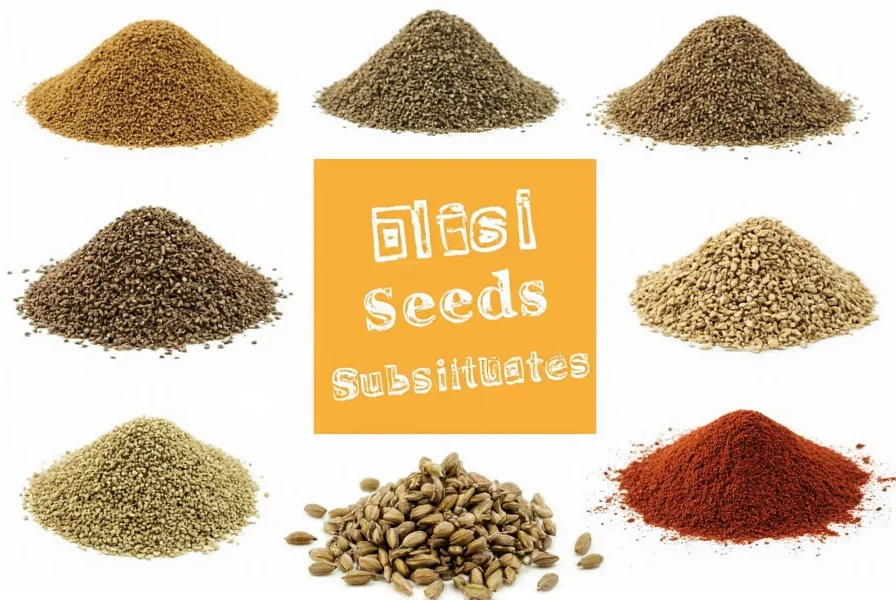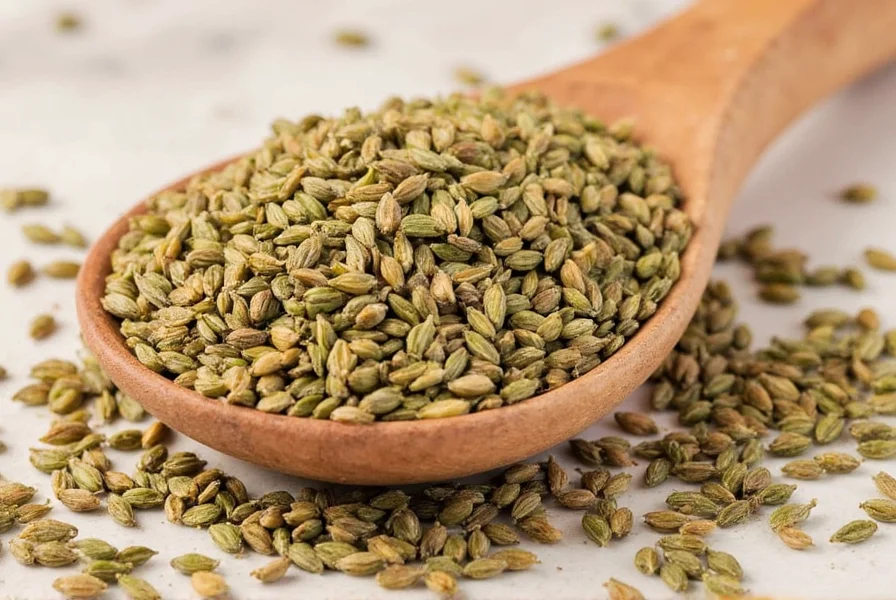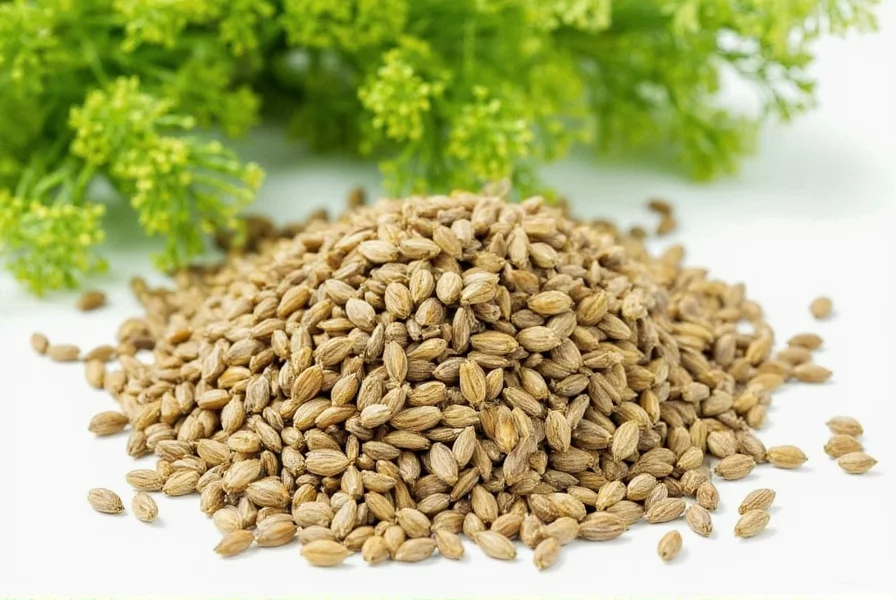The best fennel seeds substitutes are dill seeds (use 3/4 teaspoon dill for every 1 teaspoon fennel), anise seeds (use 1:1 ratio but with stronger licorice flavor), and caraway seeds (use 3/4 teaspoon caraway for every 1 teaspoon fennel). Fennel pollen works as a premium substitute at half the quantity, while star anise provides intense licorice notes but should be used sparingly. The ideal replacement depends on your specific recipe—Italian dishes typically work best with fennel pollen or dill seeds, while Indian cuisine often pairs better with caraway.
When you're in the middle of cooking and realize you've run out of fennel seeds, knowing the right substitute can save your dish. Fennel seeds have a distinctive sweet, licorice-like flavor with subtle earthy notes that's essential in many Mediterranean, Indian, and Middle Eastern recipes. Understanding which alternatives work best requires knowing both the flavor profile you're trying to replicate and the specific culinary context of your dish.
Understanding Fennel Seeds' Unique Flavor Profile
Fennel seeds contain anethole, the same compound that gives anise and star anise their characteristic licorice flavor, but with additional herbal and slightly sweet notes. This complex profile makes direct substitution challenging, as many alternatives only capture part of fennel's essence. The seeds' moderate intensity—stronger than dill but milder than anise—means you'll need to adjust quantities when substituting to avoid overpowering your dish.
Professional chefs emphasize that successful substitution depends on whether you're using fennel for its primary flavor (like in Italian sausage) or as a supporting note (such as in Indian spice blends). This distinction dramatically affects which alternative will work best for your specific application.

Top Fennel Seed Substitutes Ranked by Culinary Application
Not all substitutes work equally well across different dishes. Here's how the top alternatives perform in specific cooking contexts:
| Substitute | Best For | Worst For | Flavor Match | Substitution Ratio |
|---|---|---|---|---|
| Dill seeds | Italian sausage, breads, fish dishes | Indian curries, strong meat rubs | 75% | 3/4 tsp dill = 1 tsp fennel |
| Anise seeds | Baking, desserts, mild sauces | Savory meat dishes, pickling | 90% | 1:1 ratio (use slightly less) |
| Caraway seeds | Rye bread, cabbage dishes, German cuisine | Delicate fish, light sauces | 70% | 3/4 tsp caraway = 1 tsp fennel |
| Fennel pollen | Premium Italian dishes, finishing touch | High-heat cooking, budget recipes | 95% | 1/2 tsp pollen = 1 tsp seeds |
| Star anise | Chinese five-spice, braised meats | Quick breads, light sauces | 85% | 1 star anise = 1 tsp fennel (remove before serving) |
Detailed Substitute Analysis
Dill Seeds: The Most Versatile Alternative
Dill seeds offer the closest overall substitute for fennel seeds in most savory applications, particularly for fennel seeds replacement in Italian cooking. While dill has a more pronounced grassy note, it shares fennel's moderate licorice undertones without being overpowering. When making sausage or meatballs, dill seeds provide similar texture and distribute evenly throughout the mixture.
For the best fennel seed substitute for sausage, use dill seeds at a 3:4 ratio (3/4 teaspoon dill for every teaspoon of fennel called for). The slightly different flavor profile won't be noticeable in strongly seasoned meats, and many professional charcuterie makers actually prefer this combination for its complexity.
Anise Seeds: Intense Licorice Flavor
Anise seeds deliver a more concentrated licorice flavor than fennel, making them excellent for baking applications but potentially overwhelming in savory dishes. When considering what to use instead of fennel seeds in bread, anise works well in sweet breads and pastries but can dominate in savory focaccia or dinner rolls.
Use anise seeds at a 1:1 ratio but consider reducing by 1/8 teaspoon when substituting in recipes calling for more than 1 teaspoon of fennel. The stronger flavor means you'll often need less than the recipe specifies. Anise works particularly well as a fennel seed alternative for pickling where its intense flavor can properly infuse the brine.

Caraway Seeds: Earthier Alternative
Caraway provides a more earthy, slightly peppery alternative that works well in certain applications where fennel's sweetness might be undesirable. This makes caraway an excellent choice for cabbage dishes, rye bread, and certain meat preparations where you want to maintain the textural element of seeds without the pronounced licorice note.
When substituting caraway for fennel, use a 3:4 ratio (3/4 teaspoon caraway for every teaspoon of fennel). This accounts for caraway's stronger, more pungent flavor. Caraway works particularly well as a fennel seed replacement ratio in recipes where fennel plays a supporting rather than starring role.
Cuisine-Specific Substitution Guide
Italian Cuisine Substitutions
For authentic Italian dishes like sausage, tomato sauces, or fish preparations, fennel pollen represents the premium substitute option. Though more expensive, it delivers the most authentic flavor at half the quantity (1/2 teaspoon pollen equals 1 teaspoon seeds). When making meatballs or sausages, dill seeds provide the most practical alternative without significantly altering the dish's character.
Indian and Middle Eastern Cuisine
In curry blends and spice mixes, caraway seeds often work better than dill as a fennel substitute because they better withstand high-heat cooking and complement other spices like cumin and coriander. For biryani or garam masala, use caraway at a 3:4 ratio. In Persian and Turkish dishes, consider a combination of dill and a tiny pinch of star anise to approximate fennel's complex profile.
Common Substitution Mistakes to Avoid
Many home cooks make critical errors when substituting fennel seeds that can ruin otherwise good dishes. The most common mistake is using equal quantities of stronger substitutes like anise or star anise, resulting in overpowering licorice flavors. Remember that how to substitute anise seeds for fennel seeds requires careful measurement adjustment.
Another frequent error is substituting ground spices for whole seeds without considering texture. Whole seed substitutes maintain the textural element crucial in dishes like sausage or bread, while ground alternatives work better in sauces and marinades. When possible, toast seed substitutes before use to enhance their flavor and better approximate fennel's roasted profile.
When No Substitute Will Suffice
Certain recipes rely so heavily on fennel's unique flavor that substitutes create noticeably different results. Traditional Italian sausage, absinthe-infused dishes, and certain Indian digestive preparations fall into this category. For these specialty applications, consider making a quick trip to the store rather than substituting, or adjust your menu to feature a dish that works with your available ingredients.











 浙公网安备
33010002000092号
浙公网安备
33010002000092号 浙B2-20120091-4
浙B2-20120091-4